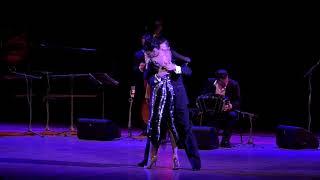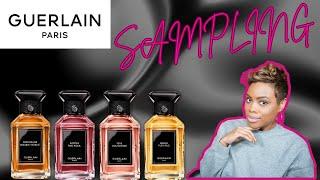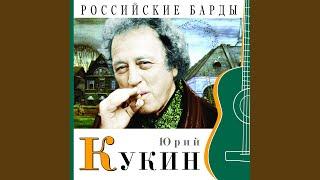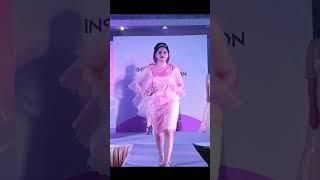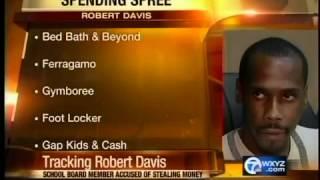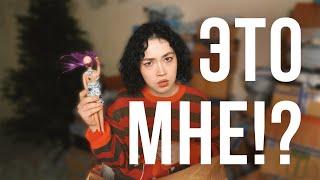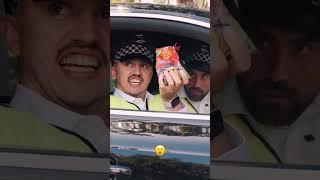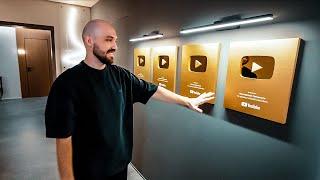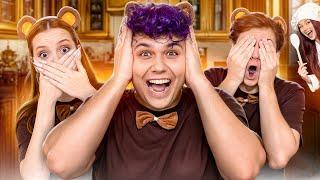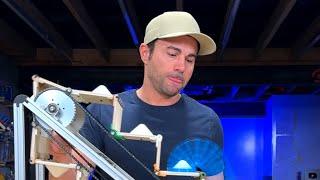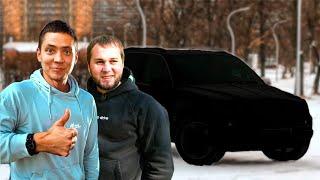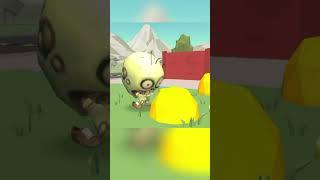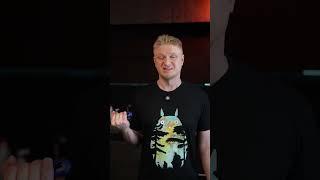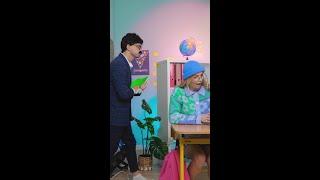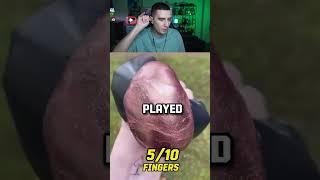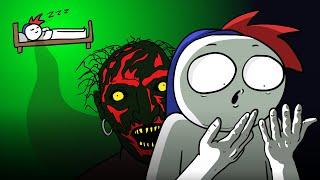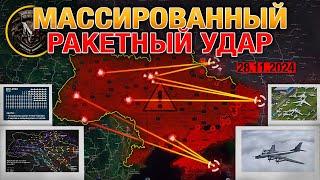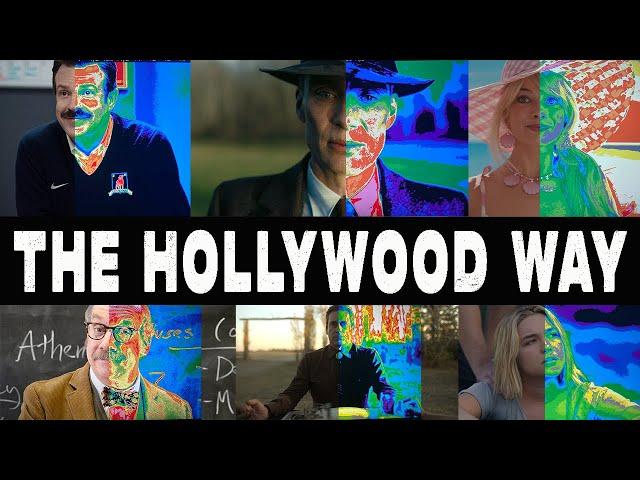
How to Improve Your Film with Lighting Contrast Ratios
Комментарии:

Bravo on this one Justin. Excellent explainer and especially that ending diatribe on why lighting is important to filmmakers.
Ответить
Well done Justin!
Ответить
Superb
Ответить
You have to remember that the show LUT used for each production affects the final contrast ratio by quite a bit. Contact printed film, like Oppenheimer, increases the perseved contrast ratio, so your 4 stop contrast ratio was probably shot at a lower ratio on set, with added contrast as a result of the print
Ответить
Love this! So glad I follow you!
Ответить
Such a clean set of examples. Saving this for reference.
Ответить
The fact That I’ve watched all those films you mentioned and we both did a video for Scotty Nando makes me think we will work one day.
Ответить
Your videos are educational and entertaining, and have helped me to up my filmmaking game. Thank you Justin!!
Ответить
Wonderfully put Justin.
Ответить
Am I tripping, or did you light your talking head portions to match the ratio of lighting that you were explaining?! Genius!
Ответить
Barbie is possibly the silliest concept for a picture ever. I can’t believe more than 5 people actually went to watch it.
Ответить
This video is super helpful! One thing I've struggled to understand is how to determine stops with dimmable LED lights without a light meter (if it's possible). How do you know what brightness percentage equals a stop?
Ответить
Great info
Ответить
Your videos are super interesting, you’re a great instructor of your craft. I don’t work in the industry, but find this information very fascinating. This helps and inspires me when I pick up a camera as a hobbyist. Thanks for sharing your work!
Ответить
Great content! Keep it up!
Ответить
You’re comment about being a “real filmmaker” definitely doesn’t come off well. I agree that there’s a lot of inexperienced DP’s out there trying to teach lighting…however, you DO NOT need IMDB credit to be a real filmmaker. The beauty of this career is there is not a thing we need to do or accomplish to be a “real filmmaker”
Ответить
Oh snap this is helpful
Ответить
This is sick! 🧨
Ответить
Great video
Ответить
I don't know if comparing digital and film should have been used here. You cannot expose digital 7 stops over on skin tones without it looking pretty much white and blown out. It's one of the differences of film and digital. Film will protect color and texture on the high end in a way digital has never been able to. Maybe just a note in case somebody watches this video and tries to expose a digital image the way they exposed Oppenheimer.
Ответить
It's incredible. My eyes were constantly deceiving me while watching movies about the difference in stops. Thanks
Ответить
You are amazing man, I love to hear some useful lighting/recording tips like this, not just mindless gear videos.
Ответить
How far up the chain is the script passed - this is lighting but does the editor get a copy of the script? How about the colorist?
Ответить
I think all the examples are wrong...! There's NO WAY the Oppenheimer scene has 7 stops of difference between the key and the fill!!! Do you know the difference of light that is 7 stops???????
Ответить
You the man! Love the Oppenheimer look.
Ответить
I tried taking some screen grabs from my favorite shows and loading them into my smallhd monitor which I did correctly but somehow it’s not letting me see the EL Zone.
Ответить
Everyday's a school day.
Oh, by the way, thanks for introducing me to the Rokkors.
My life is so much more enriched, un-like my bank account.
So from 25 miles north of London, be lucky stay safe.

Awesome & Thanks Sir 🙏🕊
Ответить
True educator ❤
Ответить
As always, a great video!
Ответить
Cool. I'm trying to get better at every aspect of video making and haven't ever come across this concept in any lighting tutorial.
Ответить
Great video Justin!
Ответить
Is there a specific app you're using to see the EL Zone values of the images?
Ответить
Hi, where can I get the LUT you used for the false color?
Ответить
im a batman
Ответить
What size diffusion rags would you recommend to start out with? 6x6 or 8x8? You have a video on recommended light packages, but do you have one for a small diffusion set?
Ответить
I actually enjoyed this one. Yes, we should be using light meters and not depend on EL zone, but for the sake of the video, the EL zone represented the full image as a visual reference.. The point came across, especially when you mentioned the script. It all starts and ends with what’s on the page. I just shot a documentary that had no script but still went through my logline and the interviews, and now I’m shooting 2 more shorts before end of the month here in LA…. one story has both high key and low contrast and the other is a horror with barely any lights. I appreciated the video. good job
Ответить
Legend! thank you for creating this
Ответить
Great video, as always! How are you looking at the EL Zone spectrum in Davinci or other NLEs? I'd like to study the contrast ratios of some stills but can't find a way to do so.
Ответить
👑⚡️
Ответить
He glazed that sponsor's bag 🤣
Ответить
Awesome video! Thank you for sharing.
Ответить
I thought the EL zone was supposed to work only on log color spaces, not on color-corrected images.
Ответить
Is there any way to get EL zone (or something similar) as an overlay in Resolve/display LUT to help dial in ratio’s?
Ответить
Clean
Ответить
Pro cinematographer here, and great video, wish budding filmmakers would get the philosophy behind this
Ответить
This is an interesting video conceptually, but you’re using EL Zone on display tonemapped imagery when it’s designed for scene-referred inputs (such as log or raw linear) and it’s wildly misrepresenting your references. Your 3 stop example from The Leftovers is suggesting his forehead is landing 5 stops above the shadow by his nose, while only being a stop under middle gray. There’s not a gaffer alive who would light that hot, nor would that contrast level render this low. Shadow wouldn’t be that deep, and the forehead would be practically clipping. Similarly, with your Oppenheimer shot. It’s nowhere near a 7-stop ratio.
Again, I think lighting ratios are useful to think about and I applaud broaching the topic, but your examples are going to end up strongly misleading people on both how to judge and measure those ratios and how they’re going to look. I would test the differences in camera through your monitor, shooting log. This way your EL Zone is performing the intended spot meter level function it was made for and you can see realistic versions of your scenarios. You’ll quickly find that people rarely shoot beyond 4-stop diff for very apparent reasons.

👍
Ответить


